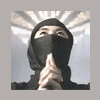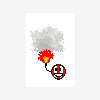
Katori ... ???
Napisano Ponad rok temu
- Ken –Jutsu (techniki miecza),
- Bo-Jutsu (techniki kija),
- Naginata -Jutsu(techniki halabrdy),
- Iai –Jutsu (techniki szybkiego dobywania miecza),
- Ryoto -Jutsu (techniki walki dwoma mieczami),
- Kodachi -Jutsu(techniki malego miecza),
- Soo – Jutsu(techniki dlugiej wlóczni),
- Shuriken –Jutsu (techniki rzucania ostrzami),
- Ju-Jutsu (techniki walki golymi rekami),
- Nin -Jutsu(techniki szpiegostwa),
- Sen –Jutsu (strategia),
- Chikujo -Jutsu (techniki budowania fortyfikacji)
IMHO ... jak coś jest do wszystkiego to jest do niczego? :roll:
Znawców proszę o wyjaśnienia ... bo ja się nie znam :twisted:
Napisano Ponad rok temu
Napisano Ponad rok temu
Napisano Ponad rok temu
Z tego co mi wiadomo jest to szkola walki, w ktorej naucza sie 12 form walki, ktore wymieniles. Zalozycielem byl Iizasa Ienao, urodzony w 1387 roku w iosce Iizasa.

Jesli bardzo Ci zalezy na dokladniejszym info to sobie przeczytaj:
In 1387, the founder of the Katori Shinto Ryu, Ienaoko, was born in the village of Iizasa. It is told that at an early age he was already a master of the sword and the spear (yari). As a samoerai (knight) of the daimyo (lord) of Chiba he took part in several battles. The ruling house of Chiba fell from power after a conflict with the Shogun. In this conflict the fortified homestead of the Iizasa-family was levelled with the ground, together with a number of villages in the family domain. Sad and masterless, Ienaoko travelled to the Katori-shrine, hoping to attain satori (enlightenment) by a combination of prayer, meditation and rigorous training. At this time, he was 64 years of age. He went to live in a plain home at the gate of the Katori-shrine, near his present grave.
Katori Dai Jingu
He rose every morning before dawn, in summer and winter, and practised with sword, naginata (halbard) and yari untill late in the evening. Before he returned to his home he took for purification an icecold bath. After that he recited for an hour his prayers at the Katori-shrine. Coming home he studied, physical exhaustion notwithstanding, till late at night religious and philosophical scriptures. He lead this life for one thousand days. Then one night there appeared to him in a dream the god to whom the Katori-shrine was dedicated: Futsunoshi no Mikoto. The god had taken the form of a young man and was sitting on a branch of an old tree near the place where Ienaoko performed his daily exercises. The vision beckoned Ienaoko to come near him and presented him with a scroll, the Mokuroku Heiho Shinsho, uttering the words: 'Choisai, thou shall be the tutor of all the great swordfighters under the sun!' After this utterance the young man jumped out of the trea and disappeared. As Ienaoko woke up he had the sroll clasped to his breast. The Mokuroku contained the divine descriptions of martial techniques and strategy. Following this revelation Ienaoko changed his name in 'Choisai' and founded his school of sword fighting. He named it Katori, after the Katori-shrine. To honor Futsunoshi no Mikoto he added the words Tenshin shoden (transmitted by the Gods). He added further the word Shinto: immaculate (pure) sword. The present headmaster of the Katori Ryu has in his possession a large number of manuscripts, mostly written by Choisai, that show how he studied and elaborated in an exhaustive way the techniques given to him. When the Gods let him pass away, in the second year of Sho-Kyo (1488), at the fifteenth day of the fifth month, Choisai had reached the high age of one hundred and one year. Starting with Choisai's eldest son, Wakasaka no Kami Morichika, his descendants continued for generation after genera-tion the school. After the foundation of the school by Choisai it became tradition that it only served the emperor, or the country in situations in which it was in danger. Each person who wanted to practice the martial arts in a serious and devoted manner could be admitted to the school. In the registers in the archives of the Katori Shinto Ryu are the names of famous sword fighters in Japanese history, such as Nobut-suna, the founder of the Kage Ryu, the renowned Tsukuhara Bokuden, founder of the Kashima Shinto Ryu, the famous generals Oda Nobuna-ga, Toyotomi Hideyoshi, Takenaka Hanbei Shigeharu and many others. Even the legendary Miyamoto Musashi visited the Katori-shrine in his quest for enlightenment.
Till the present day there is held every year at the fourteenth of April a memorial service in the Katori-shrine. This service inclu-des a gohei: a Shinto-ritual in which the Gods are invoked with a holy staff, embellished with strips of paper folded in a complex way. Every twelfth year, the Year of the Horse, a great feast is held for two days, the Jinko-Sai. In the 35th year of Showa (1960) the Tenshin Shoden Katori Shinto Ryu was declared to be an 'intact (i.e., authentic) national cultural treasure of Japan', as the first and only one of the martial disciplines.
! PoZdRaWiAm !
Użytkownicy przeglądający ten temat: 1
0 użytkowników, 1 gości, 0 anonimowych
 FaceBook
FaceBook
10 następnych tematów
-
 "brudne chwyty"+ zapasy vs bjj ??
"brudne chwyty"+ zapasy vs bjj ??- Ponad rok temu
-
 Jak zostac "fighterem"?
Jak zostac "fighterem"?- Ponad rok temu
-
 Krótka charakterystyka SW
Krótka charakterystyka SW- Ponad rok temu
-
 co dla juniora?
co dla juniora?- Ponad rok temu
-
 ŻENADA!!!
ŻENADA!!!- Ponad rok temu
-
 wakacyjne treningi w lodzi
wakacyjne treningi w lodzi- Ponad rok temu
-
 Co "do filmow".
Co "do filmow".- Ponad rok temu
-
 Kobiety walczące
Kobiety walczące- Ponad rok temu
-
 Głód treningów
Głód treningów- Ponad rok temu
-
 CO jest lepsze ?
CO jest lepsze ?- Ponad rok temu







